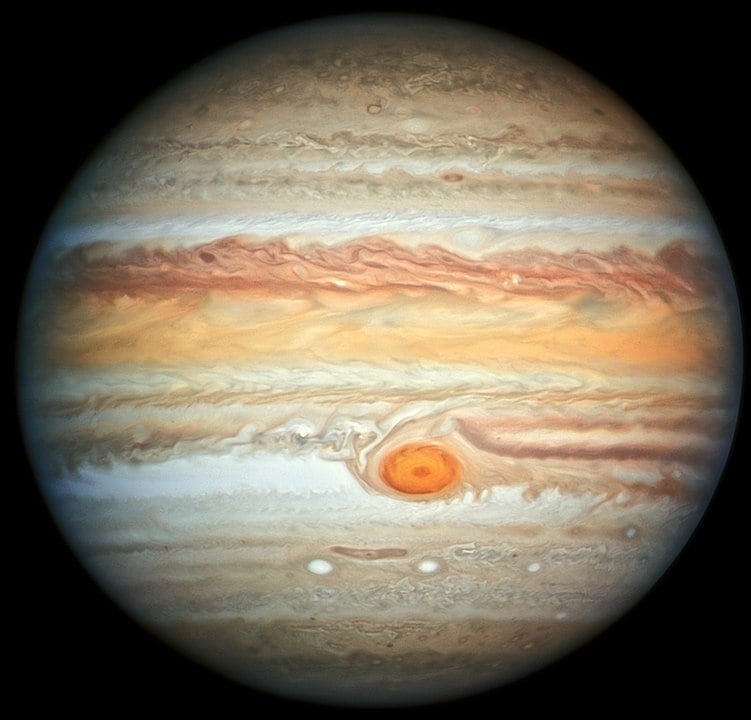About half of all the star systems in the galaxy are made of pairs or triplets of stars. Our solar system features just one star, the Sun, and a host of (relatively) small planets. But it was almost not the case, and Jupiter got right on the edge of becoming the Sun's smaller sibling.
Jupiter, the biggest planet in the solar system, is by far the largest. If you added up the masses of all the other planets, it wouldn't even come to half of the mass of Jupiter. You could eliminate every single planet in the solar system except Jupiter, and you would basically still have...the solar system.
I'm not trying to make you feel insignificant, but the mass of the Earth is just a rounding error when adding up all the stuff orbiting the Sun.
Jupiter is so immensely big that it's right on the cusp of becoming a star in its own right. If it were about 80 times bigger than it is, it would be heavy enough that the pressures and temperatures in the core would be high enough to ignite nuclear fusion of hydrogen and start Jupiter on the path to stardom (albeit as a small, barely-there red dwarf, but it would still count).
Now I get that "80 times" sounds like a big deal. If you were 80 times bigger than you are now, that would be a slightly concerning medical issue. But in the astronomy world that's peanuts.
The material that formed our solar system coalesced to form the planets, and most of that material ended up on Jupiter through runaway exponential growth. A small clump of rocks and ices - probably about 5-10 times the mass of the Earth - formed a core which hoovered down all the surrounding hydrogen and helium as fast as it possibly could. And when it comes to exponential growth, 80 times bigger isn't all that much - if you want an analogy, just see how quickly the recent novel coronavirus outbreak spread in a matter of days.
If our solar system was just a little bit different, with more material in the disk surrounding the young sun, an entire chunk of gas would have pinched itself off and began collapsing, and Jupiter would have ended up igniting and lighting up as a second sun. This doesn't rule out the formation of other planets - we know of planets orbiting binary stars - but it would make life on Earth much more unlikely, as planets that orbit in binary systems almost never get that sweet spot of temperatures needed to prevent water from either evaporating from heat or freezing from cold.
So we'll take Jupiter exactly as it is, thank you.
 Universe Today
Universe Today

